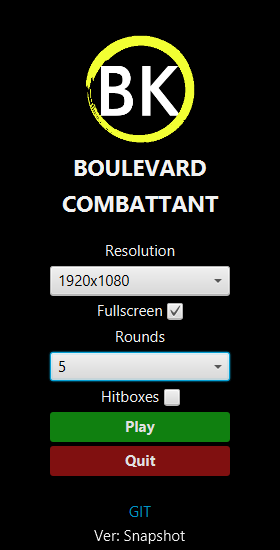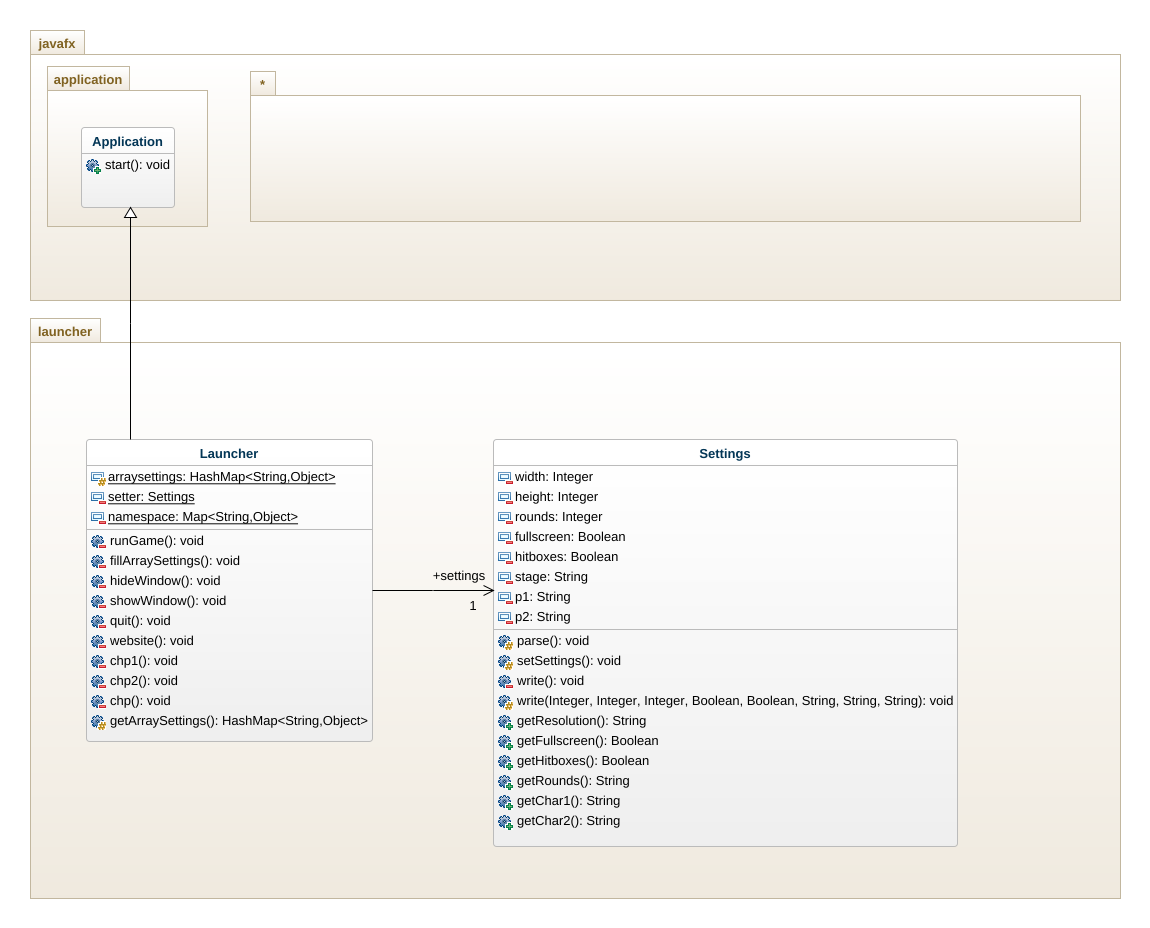3.4 KiB
Boulevard Combattant Launcher
What is the launcher about?
In order to allow for the end-user to properly input its preferred parameters, we needed a user interface to edit the game.set JSON configuration file (which is then parsed by the game engine to configure itself). Therefore, a launcher window providing basic configuration toggles and boxes was implemented.
Functionality
Through this window, the end-user can set the resolution, whether or not to display the game fullscreen or windowed, how many rounds to play and whether or not to display the hitboxes in-game.
Also implemented is the ability to select characters for each player and another arena. However, this game having both a single character and a single arena, this part of the user interface has been obscured.
Behaviour
When starting the program, the launcher window pops, prompting you to enter your preferred settings. Clicking on play will hide the launcher and start a new thread containing the game engine itself. Upon thread completion (ie: the match has ended, or the player quit the game), the window will reappear.
How does it work?
The launcher code is entirely comprised within the launcher package. There are two classes: launcher.Launcher and launcher.Settings.
launcher.Launcher
This class is an extension of the javafx.application.Application class. As such, it operates within its own JavaFX thread, allowing it to manipulate JavaFX artifacts at will using the @FXML annotation tag.
Any JavaFX Application class instance must have a start(Stage primaryStage) method. This method is automatically called when an instance is created. start(...) proceeds to load the launcher.fxml resource file contained in the launcher package. This FXML file defines a class arborescence describing a JavaFX scene to be displayed. Once loaded, this class arborescence is filled with relevant additional information, such as default values parsed by launcher.Settings, and item lists for javafx.scene.control.ChoiceBox<> instances. Then finally, the window is given attributes (title, icon, etc) and displayed via the window manager of the operating system.
launcher.Launcher also contains additional methods to be launched through user input:
-
runGame(): transcribes the user inputed data to a format usable by
launcher.Settings, asks thelauncher.Settingsinstance linked to the launcher to write the game.set JSON file, hides the window and creates a new thread containing an instance of thegameplay.match.matchclass. Upon thread completion, the window is shown again. -
fillArraySettings(): transcribes the user inputed data to a format usable by
launcher.Settings. -
hideWindow(): hides the launcher window.
-
showWindow(): shows the launcher window again.
-
quit(): calls
System.exit(0);. -
website(): opens the gitlab page of the project in the user's default web browser on click.
-
chp(): part of the obscured character select pane. Changes the character image according to the user selected character.
launcher.Settings
This class is specifically made to bridge between the launcher itself, and the resulting game.set JSON configuration file. launcher.Settings parses game.set using com.googlecode.json-simple, a JSON parser for Java, upon instanciation. It also provides a write(...) method to write the user inputed settings to file.

